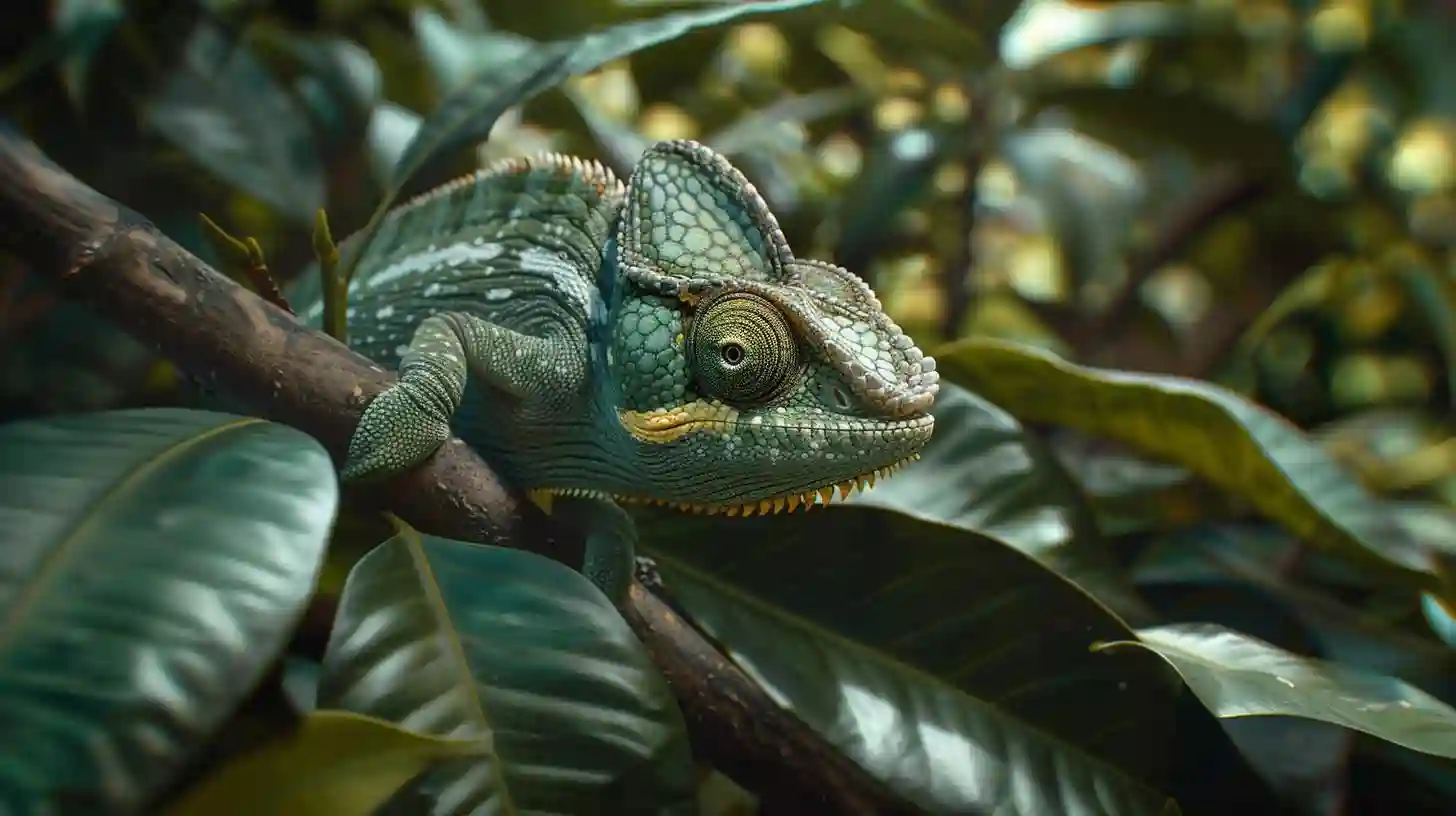
Chameleons: Masters of Stealth and Adaptation
Chameleons are perhaps one of the most amazing creatures to roam the Earth. Thanks to their unique ability to change color depending on their surroundings and unrivaled camouflage skills, they are often called masters of stealth and adaptation. These incredible reptiles have captivated the minds of scientists and nature lovers with their mysterious lifestyle and incredible abilities.
One of the most famous characteristics of chameleons is their ability to change color. This ability is not just for show, it serves a very important purpose in their survival. Chameleons change color as a means of communication, to regulate body temperature and, most importantly, for camouflage. By blending into their surroundings, chameleons can avoid predators and sneak up on unsuspecting prey. Their ability to change color is made possible by specialized cells called chromatophores, which contain pigments that expand and contract to create different colors.
But chameleons are not limited to just changing colors. They are also able to change the texture of their skin to better suit their environment. By adjusting the distance between skin cells, chameleons can mimic the rough texture of tree bark or the smooth surface of a leaf. This incredible camouflage allows them to blend into their surroundings, becoming almost invisible to the naked eye.
In addition to their impressive camouflage abilities, chameleons also have a unique method of locomotion. Their legs are specially adapted for climbing and grasping branches and twigs. Chameleons have special toes fused into pairs, forming two opposing toes on each foot. This allows them to cling firmly to surfaces and move easily through arboreal habitats. Their nimble movements and precise footwork make them exceptional hunters, capable of catching flying insects and other small prey.
But chameleons are not only masters of stealth and camouflage - they are also incredibly adaptable creatures. There are over 200 species of chameleons, each with their own unique characteristics and behavior. Some species are small and brightly colored, others are larger and more subdued in appearance. Some species live in the tropical forests of Madagascar, while others are found in the deserts of Africa. Despite their different appearances and habitats, all chameleons share common traits that allow them to thrive in a wide variety of environments.
One of the key adaptations of chameleons is their specialized eyes. Chameleons have independently moving eyes that can rotate 180 degrees in all directions. This allows them to have a panoramic view of their surroundings without turning their head. Their eyes are also able to focus independently, allowing them to have stereoscopic vision and accurately determine the distance to prey. This incredible visual acuity gives chameleons a significant advantage when hunting and avoiding predators.
Another great adaptation of chameleons is their prehensile tails. Their tails not only serve for balance, but can also be used as an extra limb to help them climb and cling to branches. Chameleons are known to use their tail as a fifth limb, allowing them to move with dexterity and grace in their arboreal habitats. Their tails are also capable of regenerating themselves if damaged, ensuring that chameleons can continue to navigate their environment effectively.
Chameleons are also known for their unique reproductive behavior. Male chameleons are known for their elaborate displays and colorful markings while courting females. They nod their heads, puff up their bodies and display their bright colors in an attempt to attract a mate. Some species of chameleons are even able to change their color and pattern during courtship, demonstrating their ability to successfully communicate and mate. When a female chameleon is ready to lay eggs, she looks for a suitable nest site and buries the clutch in the soil or vegetation. The female chameleon will often dig a hole with her hind legs, carefully lay her eggs, and cover them with soil to protect them from predators.
Despite their impressive array of adaptations, chameleons face threats to their survival in the wild. Habitat loss, deforestation and climate change are posing significant challenges to chameleon populations around the world. As their natural habitat continues to be destroyed, chameleons are losing critical resources and face increasing competition for food and shelter. Efforts are being made to conserve chameleons and their habitats, but more needs to be done to ensure their long-term survival.
As we continue to learn more about these amazing creatures, it becomes clear that chameleons are truly remarkable animals. Thanks to their unparalleled abilities for stealth, camouflage and adaptation, they have thrived in a variety of environments for millions of years. By studying and protecting chameleons, we can gain valuable information about the natural world and appreciate the beauty and complexity of life on Earth. Chameleons remind us of the incredible diversity and resilience of life and inspire us to cherish and protect the wonders of nature for future generations.